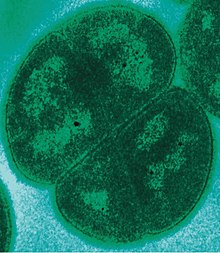| Submission declined on 14 October 2024 by Bonadea (talk). This submission is not adequately supported by reliable sources. Reliable sources are required so that information can be verified. If you need help with referencing, please see Referencing for beginners and Citing sources.
Where to get help
How to improve a draft
You can also browse Wikipedia:Featured articles and Wikipedia:Good articles to find examples of Wikipedia's best writing on topics similar to your proposed article. Improving your odds of a speedy review To improve your odds of a faster review, tag your draft with relevant WikiProject tags using the button below. This will let reviewers know a new draft has been submitted in their area of interest. For instance, if you wrote about a female astronomer, you would want to add the Biography, Astronomy, and Women scientists tags. Editor resources
|  |
| Submission declined on 8 October 2024 by Shadow311 (talk). This submission is not adequately supported by reliable sources. Reliable sources are required so that information can be verified. If you need help with referencing, please see Referencing for beginners and Citing sources. Declined by Shadow311 2 months ago. |  |
| Submission declined on 8 October 2024 by I dream of horses (talk). This submission is not adequately supported by reliable sources. Reliable sources are required so that information can be verified. If you need help with referencing, please see Referencing for beginners and Citing sources. Declined by I dream of horses 2 months ago. |  |
 Comment: Please do not resubmit without first making sure that all information in the draft can be verified in reliable sources (which should be cited in the text). bonadea contributions talk 15:28, 14 October 2024 (UTC)
Comment: Please do not resubmit without first making sure that all information in the draft can be verified in reliable sources (which should be cited in the text). bonadea contributions talk 15:28, 14 October 2024 (UTC)
 Comment: Completely unsourced. I dream of horses (Hoofprints) (Neigh at me) 00:54, 8 October 2024 (UTC)
Comment: Completely unsourced. I dream of horses (Hoofprints) (Neigh at me) 00:54, 8 October 2024 (UTC)
Dendrogiganteus is an extinct species of spore/pollen/algae-like bacteria. It contains a single species, Dendrogiganteus deinosuchus. Other genera include Sympothos, which parasitizes all species of Agriochoerus, Palos parasitizes all species of Smilodon, Parafleidingia parasitizes Dormaalocyon latouri, and Hyrogulum parasitizes Yanoconodon allini.
| Dendrogiganteus Temporal range:
Possible Holocene records
| |
|---|---|

| |
| Deinococcus is simliar shape and size as a Dendrogiganteus | |
| Scientific classification | |
| Domain: | Dendrogigantokaryota
|
| Superkingdom: | Dendrogigantophyta
|
| Kingdom: | Dendrogiganta
|
| Subkingdom: | Eudendrogiganta
|
| Superdivision: | Dendrogigantosolum
|
| Superphylum: | Dendrogigantophylum
|
| (unranked): | Coleopothohydum
|
| Phylum: | Dendrogigantophyta
|
| Subphylum: | Dendrogigantophylis
|
| Infraphylum: | Dendrogigantobus
|
| Microphylum: | Dendrodi
|
| Nanophylum: | Dendri
|
| Superclass: | Dendrodi
|
| (unranked): | Dendrogigantum
|
| Class: | Dendrogigantola
|
| (unranked): | Dendrolparvum
|
| Subclass: | Dendrogiganticola
|
| Infraclass: | Dendrogyroata
|
| Superorder: | Dendrocladus
|
| (unranked): | Dendrogigantoida
|
| Order: | Dendrogigantida
|
| (unranked): | Dolodoidendrida
|
| Superfamily: | Dendrogigantoidea
|
| Family: | Dendrogigantidae
|
| Subfamily: | Dendrogigantinae
|
| Tribe: | Dendrogigantini
|
| Subtribe: | Dendrogigantina
|
| Genus: | Dendrogiganteus
|
| Species: | D. deinosuchus
|
Distribution
editBajo de la Carpa Formation, Patagonia.
Description
editIt naturally parasitizes all species of Notosuchus by dividing a clone in a fish species called Rinconodus. It then it can be carried by the wind and settle on to the eyes of N. terrestris. Some individuals can reach into the lungs. It can enter the digested food where it can clone themselves on their own. Later, feces of a Notosuchus terrestris are covered with many Dendrogiganteus deinosuchus. Notosuchus terrestris embeds in a "curve" position and the Notosuchus lepidus touches the "curved" position N. terrestris.
It has a shape and size similar to a Deinococcus.